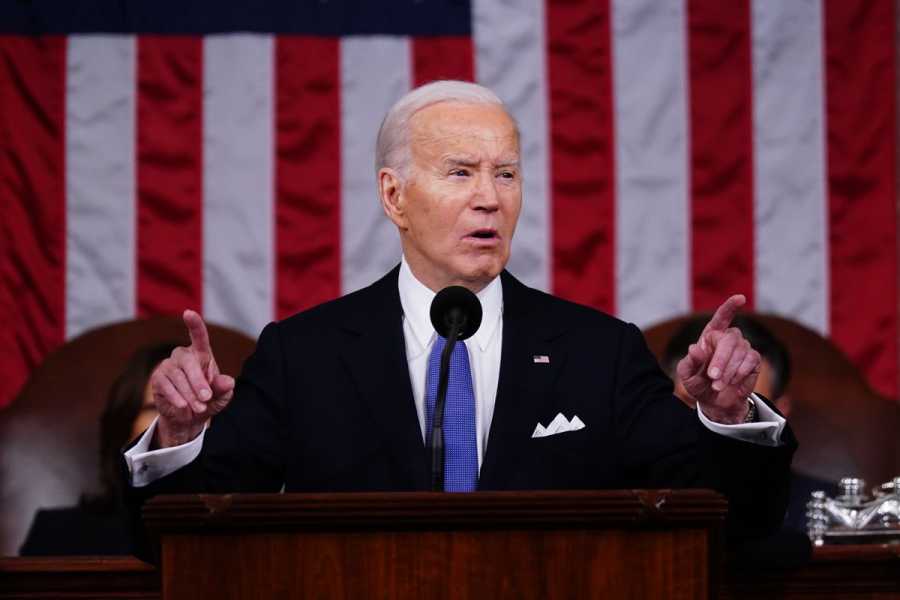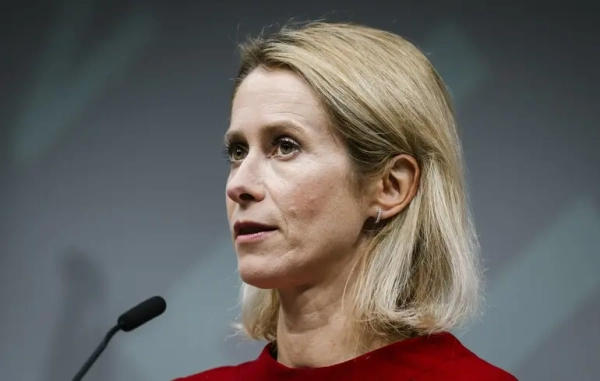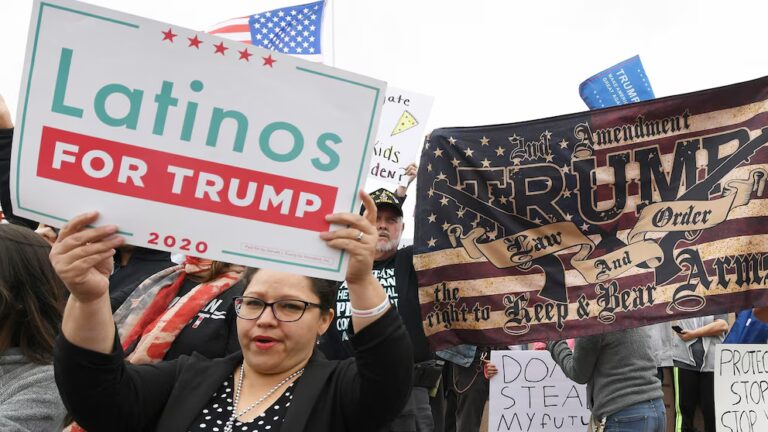The president is getting walloped on the economy. Here’s how he tried to change that.

President Joe Biden delivers the annual State of the Union address before a joint session of Congress on March 7, 2024, in Washington, DC. Shawn Thew/Getty Images
The state of Joe Biden’s reelection campaign is weak. The president entered Thursday night’s State of the Union address with a 56 percent disapproval rating, which is roughly the same as Donald Trump’s was in the immediate aftermath of January 6. In national polls, Biden trails Trump by an average of 2.2 percent; his standing in battleground state surveys is even worse.
The president has problems that no single speech can solve. But with a rare opportunity to address a large national audience, he aimed to mitigate at least a few of them. Biden’s most widely discussed challenge is the electorate’s concerns about his age and mental acuity. He tried to assuage those on Thursday night with an energetic, combative, and exceptionally partisan address. The octogenarian-in-chief appeared to take delight in the GOP’s heckles, veering off script to spar with his critics and often seeming to get the better of them.
But voters’ doubts about Biden are not confined to his cognitive fitness. They’ve also taken a dim view of his economic management.
Polls consistently show Americans favoring Trump over Biden on “the economy” by double-digit margins. In one recent CBS News survey, 65 percent of Americans said that the economy under Trump was good, while only 38 percent said the same of the economy under Biden. In the New York Times/Siena’s polling, 40 percent of Americans said that Trump’s policies had helped them, while only 18 percent said as much of Biden’s policies.
Those well-versed in the contemporary economy’s objective virtues — rising real wages, declining inequality, high household wealth, and low unemployment — may find these figures baffling. Yet prices remain much higher than they were when Biden took office, and the Fed’s interest rate hikes have exacerbated the impact of these elevated costs. Polls, focus groups, and economic research all indicate that it is this jump in the cost of living that’s driving the public’s discontent.
All this has erased the Democrats’ traditional advantage on the question of which party cares most about “the middle class” or “people like you.”
These grim numbers are not lost on the White House. In his address, Biden made a concerted effort to demonstrate his party’s superlative commitment to the middle class and articulate a vision for cutting Americans’ costs.
Specifically, the president called attention to the looming fight over the future of American tax policy. In 2025, many provisions of the Trump tax cuts are poised to expire, including the law’s near doubling of the standard deduction and all its changes to individual tax rates. Biden noted that the GOP is hellbent on preserving tax breaks for the wealthy and corporations, while the Democrats want to raise taxes on the rich so as to cut them for ordinary Americans.
Meanwhile, the president outlined an agenda for improving the middle class’s finances through a combination of tax credits, social benefits, crackdowns on corporate price gouging, and housing policies.
This adds up to a popular and progressive platform and a sound response to the public’s material discontents. Ultimately, though, even the perfect economic message is likely to be less consequential than the trajectory of prices and interest rates between now and November, which Biden has little capacity to shape.
Biden’s pro-tax populism
Whoever wins the presidency in November, next year’s central policy fight is likely to be over tax policy. Much of Donald Trump’s tax law is set to expire in the coming years, with many provisions ending as soon as 2025. Both parties are committed to extending every part of the law that directly benefits households earning less than $400,000 annually. But Democrats want to raise taxes on America’s highest earners and corporations and use that revenue to increase the post-tax incomes of middle-class and working-class households. Republicans, by contrast, want not only to extend the Trump tax cuts’ benefits for the rich, but slash top tax rates even further.
In his address to Congress, Biden put a spotlight on the two parties’ divergent fiscal priorities and their implications for middle-class Americans. The president declared that America has “two ways to go on Social Security. Republicans will cut Social Security and give more tax cuts to the wealthy. I will protect and strengthen Social Security and make the wealthy pay their fair share!”
Biden also vowed to raise the corporate minimum tax from 15 percent to 21 percent and establish a new 25 percent minimum tax rate for billionaires. In a more detailed policy document released to the press Thursday morning, the administration touted its commitment to raising the corporate tax rate from 21 to 28 percent, ending tax breaks for owners of private jets, and funding aggressive IRS enforcement against super-rich tax cheats, among other things.
By forcing the wealthy to “pay their fair share,” the presumptive Democratic nominee would secure the funding necessary for further tax cuts for working people.
Biden reiterated his call for Congress to restore the expanded child tax credit. The temporary version of that policy, enacted through Biden’s American Rescue Plan, helped cut child poverty nearly in half before its expiration at the end of 2021, according to the left-leaning Employment Policy Institute. The president also implored Congress to revive the bulk of his Build Back Better agenda for social welfare, including public subsidies for child care, a paid leave benefit, and expansion of at-home care for the elderly.
These policy details served as the foundation for a blunt, overarching narrative: Republicans are looking out for the rich, while Democrats are looking out for you. “The last administration enacted a $2 trillion tax cut that overwhelmingly benefits the very wealthy and the biggest corporations and exploded the federal deficit,” Biden said of Trump’s signature tax law. “Do you really think the wealthy and big corporations need another $2 trillion in tax breaks?”
This is about as effective a message as any that Biden has at his disposal. As a policy platform, meanwhile, the president’s tax agenda has much to recommend it. It would cut child poverty, boost take-home pay for low-income workers, and make health insurance marginally more affordable.
Biden’s commitment to preserving all of Trump’s tax cuts for those making under $400,000, however, will constrain his party’s ambitions for social welfare.
The president’s unfulfilled Build Back Better agenda — which included many of the social welfare policies that the president name-checked Thursday night — would have cost upward of $4 trillion to fund on a permanent basis. And the Build Back Better plan was not sufficient to fully realize the progressive movement’s aspirations for universal health care and poverty eradication.
Simply put, you cannot slash taxes on the upper-middle class, build a Western European-style welfare state, and avoid increasing the deficit, as Biden has promised to do. And it would also be difficult to reconcile broad-based tax cuts and major expansions of social welfare with avoiding inflation, an objective that looks increasingly politically indispensable.
As a matter of short-term politics, it’s surely wise for Biden to forswear tax increases on all but the very rich. But that concession to popular opinion is liable to limit the ambitions of American liberalism for some time to come.
The president wants you to know he’s at war with corporate price-gougers
If Democrats need to reclaim their populist bona fides, the party also must improve Biden’s reputation for reducing the cost of living. A good deal of his speech was focused on doing precisely this.
The president spent a lot of time defending his economic record. Beyond highlighting the current economy’s many strengths, Biden sought to portray the inflationary spike of 2022 as a consequence of the pandemic that Trump had mishandled. “Four years ago next week, before I came to office, our country was hit by the worst pandemic and the worst economic crisis in a century,” Biden said. “A president, my predecessor … failed the most basic duty.” And he noted that wages have been rising while inflation has fallen to 3 percent, which he falsely claimed was “the lowest in the world.”
Nevertheless, Biden steered clear of projecting complacency about prices. Instead, he suggested that his administration is at war with corporate price-gougers and their Republican friends on Capitol Hill.
The president touted his efforts to combat so-called “junk fees,” also known as hidden fees, that render the sticker price of a good or service deceptively low, noting that his administration had pressured major online ticket sellers into showing customers the full price of their wares upfront. And he announced that his administration was poised to lower the cap on credit card late fees from $32 to $8.
Such deceptive pricing strategies have little to do with inflation or Americans’ cost-of-living difficulties writ large. But they are one highly salient source of price-related annoyance, and one that many Republicans are ideologically incapable of criticizing. It therefore makes good political sense for Democrats to take ownership of the issue. As a substantive matter, restricting the capacity of major financial institutions to milk cash-strapped Americans for their every last cent is certainly worthwhile.
The crusade against corporate price-gougers also has the benefit of diverting the public’s outrage over inflation away from the administration itself. A February poll from the left-leaning firm Navigator Research found that 59 percent of Americans consider corporate greed to be a “major cause” of inflation. An equal share of the public said the same about “government spending.” The more Biden can get voters to blame high prices on the former, the better off he’ll be. And he encouraged them to do precisely that in his speech, shouting, “Too many corporations raise their prices to pad their profits, charging you more and more for less and less.”
Beyond cracking down on hidden fees, Biden promised to cut costs for middle-class households by empowering Medicare to force down the prices of 500 prescription drugs, while also enacting a new federal benefit that would cap every adult’s annual out-of-pocket costs on drugs at $2,000.
Finally, the president addressed one of the biggest drivers of the cost-of-living crisis: housing. He called on Congress to provide America’s homebuyers with immediate relief by establishing a $400-a-month annual tax credit for the next two years for middle-class, first-time homebuyers. In other policy documents released Thursday, he proposed a $10,000 tax credit for middle-class families who sell their starter homes, a measure aimed at increasing the supply of affordable houses on the market.
By itself, Biden’s mortgage subsidy is unlikely to increase housing affordability by a significant amount. The fundamental constraint on such affordability is America’s shortage of housing units. If you give all would-be homebuyers $5,000 more to spend on an inadequate stock of housing units, they are likely to just bid up the price of such units by a similar amount. Nevertheless, at a time when many would-be homebuyers are fuming over high interest rates, offering such Americans free money is probably decent politics.
To its credit, the White House did spotlight several policies that would expand the nation’s housing stock. These included an expansion of the low-income housing tax credit, which subsidizes the construction and maintenance of affordable rental units, and a $20 billion competitive grant program that would reward municipalities that build affordable multifamily housing and/or reduce regulatory barriers to housing construction.
There’s only so much messaging can do
Ultimately, Biden’s policy remarks are unlikely to be of great political consequence. In America’s current information environment, relatively few voters watch presidential speeches. Last year, 27.3 million people — a figure equal to about 16 percent of the electorate — saw some of Biden’s State of the Union address. The voters the president most needs to reach were likely underrepresented in that audience; strong partisans pay much more attention to politics than swing voters.
That said, the president’s major themes Thursday night are likely a preview of his impending TV ad strategy. A months-long blitz of 30-second spots hammering the GOP’s commitment to tax cuts for the rich and the Democrats’ devotion to slashing middle-class costs could marginally improve Biden’s standing.
But changes in material conditions are likely to have a bigger impact than any economic message. Much of the apparent gap between objective economic conditions and consumer sentiment over the past year is attributable to high interest rates. If prices and borrowing costs decline between now and November, Biden’s approval will likely inch upward. If the opposite occurs, the president will have problems that no speechwriter can solve.
Sourse: vox.com






